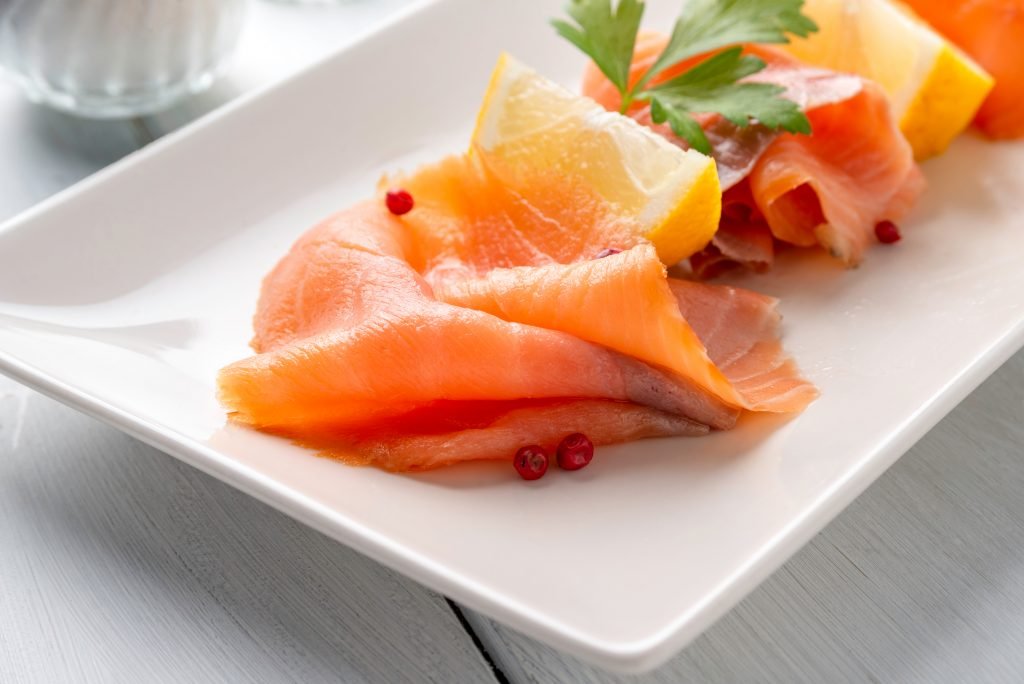Qwhen you eat salmon you are really sure about what you are consuming? Today we discover together a step in the production of this kind of food that will probably convince you to make choices
We live on a polluted planet. We eat about 5 grams of plastic a week, traces of which have been found in our blood, while tuna and larger fish contain mercury and other substances that accumulate in their bodies. A body that becomes food for many of us. In short, we think we’ve heard it all when it comes to contamination, but maybe there’s still something we’re missing: the meat of farmed salmon is not pink but gray and is colored to make it palatable and therefore encourage sales. Even Time Magazine talked about it!
In fact, in nature this fish acquires its well-known color thanks to its diet rich in certain types of algae, crustaceans and krill.
So what is the color of salmon?
The most logical answer is the correct one!
Weeks before their death, dyes are added to their food. Some are of natural origin while others are synthetic!
Astaxanthin occurs in nature and is a red-colored, fat-soluble carotenoid. It is a substance with many benefits and helps fish to stay healthy, in fact it is a natural antioxidant.

Cultures
Because the second cause of CO2 emissions in the world is in our bellies
Astaxanthin used in animal husbandry, however, it is mainly of synthetic and non-natural origin. It is one compound derived from petroleum and instead of consisting of a single isomer it consists of enantiomers. According to research, these are compounds that are not recommended for our body and could cause serious diseases, including cancer. Here is the scientific paper that talks about it.
This type of synthetic molecule is not approved for human consumption but only for animal consumption. However, when we eat farmed food we are still at risk of getting it. Something similar happens to egg yolks, whose orange color is artificially enhanced!
In 2014 EFSA (The European Food Safety Authority) gave a scientific opinion on the matter and as stated on its website: “The use of astaxanthin up to the maximum permitted dietary level for salmon and trout is not a concern for the safety of consumer”. Therefore, technically, below the maximum allowable limit for fish is not a compound considered dangerous for consumers. To be more precise we should stay below 2 mg of ATX per day if we weigh 60 kg.
Personally I would prefer not to risk it and try to “defend” as much as possible…
How to avoid this addon?
Unfortunately, the price of the synthetic compound is very competitive and therefore quite widespread. The only way to protect yourself is to eat wild salmon and organic eggs…unless you choose to hug one vegan lifestyle (always more than one valid choice) or plant based in which meat, fish, animal products and processed foods are not completely eliminated but we try to avoid them as much as possible!
Federica Gasbarro works with The Wom independently and is in no way associated with the advertisements that may appear in this content.

